Leaderboard
Popular Content
Showing content with the highest reputation on 06/03/2021 in all areas
-
Well yes, experts at the NBTHK, and lifelong scholars such as Tanobe-Sensei do have a stronger word in establishing which blades are masterworks and which ones aren't. Your level of confidence is amazingly high. 3 guaranteed Juyo is something exceptional. You're setting yourself up for dissapointment, and I strongly encourage you to post quality photos on the board so that you might have a second opinion to back-up your confidence. There are some knowledgeable members here with experience submitting to Juyo and Tokubetsu Juyo Shinsa, with varying degrees of success. Shipping, handling and failure fee will cost you about 1000$. Success is an added fee accompanied by a lock-up period. It's not cheap. Good luck on your journey.2 points
-
2 points
-
I appreciate that Roger (and no... you are not a nobody... no one is a nobody, that’s ridiculous)... and normally I would gratefully accept advice and I’m not normally ‘riled’. It’s just that our ‘friend’ has been doing this a bit lately and my patience (as well as others I think) is a bit limited with it. I almost expected his response and in the manner it was given. He enjoys it. In fact, a couple comments in my first post were tailored for this individual knowing what would happen. I was right. I won’t waste any more time with him. And I do apologize for coming across as angry or argumentative. But I still appreciate anyone who wants to look, have a bit of fun, and SPECULATE.2 points
-
Signed Shizu is automatic TJ, but there was a dozen or so later Kaneuji's which are common. I will be more direct than most - 99% chance all six blades you have are mid grade blades far removed from Juyo. Its just the way it works. Shizu Kaneuji are also relatively easy to kantei, so there should be half a dozen people in the US who can look at it and say whether its in the ball park or nowhere close to it.2 points
-
Aridooshi 蟻通 http://www.aisf.or.jp/~jaanus/deta/a/aridooshi.htm https://matuyonosuke.hatenablog.com/entry/2019/01/08/蟻通_ありどおし_ありとほし 蟻通宮図鐔 銘 打越弘寿 https://www.facebook.com/SenOkuHakukoKanTokyo/posts/547901495333682/ 蟻通宮図鐔 銘 安親 http://ginza.choshuya.co.jp/sale/gj/r1/010/00_yasuchika.htm 蟻通宮図鐔 銘 長義(花押) http://ginza.choshuya.co.jp/tsuba/21_40/35nagayoshi.htm 蟻通宮図鐔 銘 常重 https://www.kusanaginosya.com/SHOP/305.html2 points
-
2 points
-
I received the “Sho-shin Index of Swordsmiths & Price Guide”yesterday. This is the first volume of Robert Cole’s long awaited book series on Japanese sword appraisal. This is a handy reference handbook for Nihonto collectors. It is not a picture book with pretty pictures of Japanese swords and beginner’s information on Nihonto. If you do not own at least the intermediate level references Toko Jiten by Fujishiro and the Toko Taikan by Tokuno, then this reference is not going to point you to any comparative oshigata or signatures of swordsmiths. The primary component of the book is 76 pages of single line listings of swordsmiths by name and kanji, along with 9 columns of useful information. This information includes the smith’s generation (if needed), working era, province, and page numbers if listed in the Toko Taikan, the Toko Jiten, and Hawley’s. Also listed is a rating of the smith using Fujishiro’s Chu-saku through Saijo-saku ranking system. Of use for comparative pricing is the column listing Tokuno’s “Man-yen” rating for the swordsmiths listed. There is a helpful section in the book listing swordsmiths by title; there are 49 smiths listed that had the Izumi-no-kami title and only 4 that had Totomi-no-kami for example. The titles are written both in Romaji and kanji. There are two listings of Nengo; one alphabetically (Romaji) and the other chronologically with kanji. One interesting listing I don’t recall having seen before is an alphabetical listing in Romaji for a spoken word, such as “Nori,” and the kanji that are associated with it. Apparently there are 9 kanji that can be used for Nori. Who knew? There is a Nihonto glossary and some other handy things in this book, but the author’s primary focus was on listing the swordsmiths’ data. If you want quick access to the information available in this book, you will find it very useful. If you are just beginning to learn about Japanese swords, then this book is definitely not for you.2 points
-
WWII Gunto sword. In decent shape signed by Sato Yukihira. This sword comes from the Seki prefecture and was made in 1942(ish) - My guess, feel free to chime in. Comes with type 98 koshirae also in decent shape. Some corrosion and rust spots on the tsuba and seppa. Tassel is period original, but certainly not original to the sword. Please feel free to ask any questions. Asking $1600 but will consider offers and will sell the sword without the tassel for $1300 obo. 5-10% of this sale will be donated back to NMB1 point
-
1 point
-
This is something that surprised me. I was not aware that Eijo made incense burners. The price is not exorbitant, especially when you consider there is a Myochin Munekatsu snake expecting 60 000 euro or more. John Bid Now: GOTO EIJO: A MASTERFUL INLAID SUAKA (REFINED COPPER) LOBED KORO WITH MYTHICAL BEASTS - June 5, 0121 1:00 PM CEST (invaluable.com)1 point
-
Mauro, I meant to thank you for the translation. I found this one in the Cleveland Museum of Art, some very good images of tsuba on this site. https://www.clevelandart.org/art/collection/search?search=tsuba&op=search&form_build_id=form-xLDZt0Wx_PHvK80Wir3zuEXSrX7vN0NmkxncIfFFgBM&form_id=clevelandart_collection_search_form1 point
-
Just compress the images before uploading them, there are tons of applications you can use.1 point
-
Thanks for the info! You've done a good job of offering reasonably priced sale options. Under consideration, as I'm sure others are/will consider, as well.1 point
-
Dear Miguel. Welcome to NMB. The kozuka depicts a demon with a drum and the blade with it is nothing more than a paper knife. You have rescued these, now you are faced with the difficulty of knowing what to do with them. First step is to take of the habaki and lightly oil the blades. Clearly both now need a professional Japanese polish, some of our European members might be able to recommend who to use if you decide to go down this route. However, looking at the nakago of the katana it seems thicker than the blade which suggest that it has already had several polishes, given the depth of some of the rust patches it might not survive another. The koshirae looks OK for this sword. The tanto looks healthier and does not seem to be so badly damaged, more hope for this one. I like the mounts, though again they need some restoration. For now learn what you can from them and stabilise the rust as far as you can. Take careful advice and decide what you want to do with them. Enjoy! All the best.1 point
-
1 point
-
I'll bet it said KUNIHIRO. They made raw plates and this piece looks like it was seriously reworked. Peter1 point
-
Except that maybe some of us enjoy it. So maybe go back to being quiet.1 point
-
1 point
-
1 point
-
1 point
-
Its my %100 belief that uchiko is %100 damaging blades in polish unless done by a fully trained togi and the older I get the more this becomes obvious.1 point
-
Cosmoline sucks. Absolutely no benefit over most modern oils, and it is terrible stuff to remove.1 point
-
1 point
-
1 point
-
John, they could all be gimei, or none of them. When doing kantei, the nakago is one of the last places to look, & needs to be cross-referenced with the rest of the blade. On shipping tp Japam, I hope you know that you MUST have an egent, right?1 point
-
How thick is it? There were some fancy finger catches for sliding Shōji or cabinet doors, but they had a plain ‘pan’ section, not cut out like that, and if metal would probably have been quite thin.(?)1 point
-
If you're going for Juyo, best post your blades here (with decent photos) and we can save you a lot of money by filtering what could pass from what definitely cannot. Free knowledge, make the best of it.1 point
-
1 point
-
I have used Robert Hughes (member here) and Bob Benson in the past. There are others but i do not have personal experience so can't comment. Both have been excellent to work with. You can check the web NBTHK has a site. You need hozon and TH before you can submit for juyo. I think you have to be a NBTHK member to submit for Juyo, you can check with the agent you choose and they can tell you, they may be able to submit it under their names. For Hozon and/or TH i would think the sword will be gone for at least 6 months but it may take longer you can ask the agent, Juyo is only once a year and depending on the outcome it may be more than a year before it is back. If you want to submit for Juyo a polish may be required, if so it can take a couple of years for it all to get done. When i have sent items before i try and forget about them and then i am happy and surprised when the return.1 point
-
1 point
-
This is an extract from "Meito -or- What Makes a Masterpiece?" by Nobuo Ogasawara, Retired head conservator of the National Museum, Tokyo and is I think fundamental to understanding attributions. A lot of what he had to say to me was enlightening when I first read this and helped me understand and is interwoven with a lot of my comments that I make about quality and attributions including those above. This entire article is good but I'll just take some highlights so I don't have to type the whole thing in. .... Depending on who evaluates unsigned swords, a Masamune may be attributed to his son Sadamune, or a Kanemitsu to his pupil Tomomitsu. Differences of judgment are acceptable to a certain extent, but it is evidently wrong if one evaluates a Hizen Tadayoshi from the 17th century as Rai Kunimitsu from the Kamakura period at the end of the 14th century. Deliberately wrong judgments are a criminal matter, but even if it is not deliberate, anyone who gives an attribution to Kanemitsu when the work is by a pupil such as Tomomitsu or Hidemitsu will gradually lose all authority. [Darcy note: he first talks about a Masamune to Sadamune (i.e. conservative) ... a Kanemitsu to Tomomitsu (i.e. conservative)... the last sentence notes Tomomitsu or Hidemitsu to Kanemitsu which is then an inflated or incorrect judgement... so it is OK to issue a conservative judgment in the right ballpark but it is not OK to take an inferior work and assign it to a high level maker, this indicates an inability to understand the quality and so ends up with a loss of authority] We should consider the principles of Meito. Both masterpieces and inferior blades have always existed, and it is perhaps also not surprising if a single swordsmith may have been both successful and unsuccessful. In the course of the centuries many swords have been destroyed or lost. I think it amazing that swords have survived at all, considering their primary use as weapons, and their raw material is iron which can end up as a lump of rust. We must credit the Japanese at this point with the sense of beauty which impelled them to take such good care of their swords. ... One should not however confuse variation with failure. When Soshu Masamune makes nie-kuzure this is intentional, but if nie-kuzure appear as a result of failures of control during tempering, then the blade can never be good. ... There are also swords which do not attract us at all, even if the style is typical of its time and even if the jitetsu or hamon lack obvious flaws. For example a mass produced kazu-uchi-mono blade may just as plausibly be assigned to Bizen, Bungo Takada, Kai Mihara, Uda, or some other school, because the sword is of inferior quality. ... Having realized the qualities and attractiveness of the sword, it is natural to wish to own some. The most inconvenient thing about this, I think you will agree, is of a financial nature. If we think only about economics in this way we shall end up getting cheap swords which may easily be disposed of when necessary. This is perhaps understandable, but the true collector learns to transcend faincial limitations. We collect swords nowadays because we appreciate them as art objects. We do not collect them because of their excellence as weapons. Nevertheless the essence of the sword is its effectiveness as a weapon and its superiority as a weapon in expressed in the beauty of its sugata, in the brightness of its jihada, and the beauty of its hamon. ... As I have said, the Japanese Sword may be considered as a work of art, and an object of contemplation. By contrast, I have also said that the Japanese sword is a weapon, to which one could entrust one's life. The sword is both of these things. ... Once upon a time there was a rich merchant named Takeda Kizaemon. He was a great devotee of the Tea Ceremony., but he ran into difficulties and lost all his wealth, ending up as a groom in [the] stables. But, he retained his favorite Tea Bowl which he kept in a bag around his neck until the day he died. This bowl still exists and is called "Kizaemon Ido." When I was young, my Sensei showed me a sayagaki. The inscription said enigmatically: "Even if you were standing at the edge of the road..." He asked whether I understood it. I had to say that I did not. he explained that "to stand at the egde of the road" means you have become like a beggar. Even if the owner were to become a beggar, he would never part from this sword. The feeling for a Meito exists only inside us, and has really nothing to do with the works of famous swordsmiths or expensive swords. However, you must have the knowledge to understand and appreciate it. The sense or feeling attached to the swords is very important. This is the secret when you are collecting Meito.1 point
-
Common sense says that if you have a blade with active (red) rust, you need to use something that will stop/slow its progression. Depending on condition, I've used Bob's uchiko to spot-treat an area, until I can afford to get the blade in for a polish. Other than that, just remember that uchiko is the exact same material that a togishi uses to polish your blade. I'm not a togishi, so I don't use uchiko, except as above. Case in point. A fellow iaidoka saved up for five years to buy her first Nihonto, & since I had advised her, she set up a Zoom call, so I could see her reaction when she first saw her blade. It was a nice old Bizento, & I was walking her through the details, when I had to break away to take a call. What I didn't know was that the seller had sent her a "cleaning kit," thinking he was doing something good, I'm sure. Anyway, by the time I got back, she was whapping away with the uchiko ball, & didn't stop when I told her to, because she had seen Samurai doing the same thing, before they used their sword.. She wasn't going to use it that way, & I finally got loud enough to get her to stop. It didn't take her very long to be able to see the damage SHE had done, & she was in tears. There wasn't a lot more that I could say or do. "We have met the enemy, and he is us" Pogo1 point
-
This forum isn't about wheeling and dealing, we aren't a financial advisory board so please stop treating it like one.1 point
-
I can only speak to my personal experience: I've papered >100 blades, probably closer to 200 swords (did not count in any formal way). Of those re-papered (with different or same organization) something between 40 and 60. It has to be admitted that in all repapering cases I had doubts about the original attribution. These were with very few exceptions mumei blades, so I'll talk about those, with fully readable signature its just a whole different game. NONE papered to the same name. Exactly zero out of 50 or so. Including blades with half intact signatures. Most papered to the same school (i.e. Bizen, Soshu, Yamato etc.) if one accepts a more inclusive definition (i.e. Nio is Yamato, Unju is either Bizen or Yamato etc. etc.). There was no clear preference in terms of any particular shinsa team giving more favorable judgements. I had two decent Juyo repapered by NTHK-NPO to lesser names and with respective scores of 75 and 76, i.e. just "average-good" in their opinion. There was a significant spread in terms of name recognition. O-Kanemitsu and a much lesser name, almost Kozori-class - but in all honesty not that different in terms of either time or work style. The worst game is Soshu. Basically every high class tanto with late Muromachi/also late Nambokucho sugata had 50% chance to draw Shimada Yoshisuke or other Shimada name or actually something quite recognizable from Nambokucho times. i.e. if you buy really good mumei Shimada tanto and resubmit you have reasonable chance to get TH Masahiro. Uda tanto is another all-too-often notoriously weak attribution. Pre-Nambokucho blades were often messed up. Had one papered to Aoe, Bizen, Rai and Ryumon Nobuyoshi. And if I remember correctly both Rai and Bizen attributions also had smith names. True, the papers were from different time periods, but I'll just repeat myself - green papers are by far more often Kanzan Sato rather than Yakuza papers. I think all the four judgements were neither crazy nor done in bad faith - but one was definitely weak. So I am a sceptic who thinks the ability to pinpoint an exact smith name, unless one deals with an ultra-stereotypical blade by someone famous, is basically Japanese appraisers showing off. They have to do it, since their competition does it and collectors expect the name and not just (less valued) generic school attribution. If you want to stay in business you have to follow suit, even when there is honestly very little justification to be that specific. Its a small community which lives by its own rules. The problem comes when generations of appraisers change and suddenly the name you secured can be "legitemally" contested.1 point
-
I'm not going to remove the downvoting system. It can have some use, especially with bad advice. And I'm not going to make the votes visible, that would defeat the purpose. But let me just add for those who want to use them without cause...the other members can't see who did it. But I can1 point
-
i just think this Gentlemen is just jalous or just a bit misleaded...? maybe also ( my collegue with his books ) and myself are in the Gentlemen´s viewpoint dumping his selfexplained asking prices ???? ( as i personally really do not see anything negative on the offered books and also nothing negative on my offered Tsuba here ) jbw..... but to help "leveling" asking prices....i just allow me to dump my asking price i did give and do offer this Tsuba for 150.- Euro ( plus shipping ) now..... (because i can ! !) maybe still too low ???? LOL! Christian1 point
-
1 point
-
1 point
-
1 point
-
1 point
-
Excellent article translated by Guy, from a Japanese Wiki, at Warrelics. Should be pinned or archived as we reference this guy many times when folks ask about Takayama-to. Here: http://www.warrelics.eu/forum/Japanese-militaria/takayama-masakichi-man-who-responsible-takayama-ta-768582/1 point
-
The 2 or 3 times "marines" were mentioned were translation errors, better corrected to read: "Navy Basic Training Group"1 point
-
Wow great article! Thanks for the link Bruce.1 point
-
Yes, I name mine "Rich's katana 1,etc; Rich's tanto #x, Rich's waK #X Willie Nelson named his guitar.0 points
-
They spoke with the buyer several times but he refuses to consider selling me the shirasaya. The seller also refused to sell it to me before the auction. Very frustrating. Anyway there will be some karmic biteback I am sure. If anyone ever encounters this sword please let me know. The sword is pretty big (the "Norishige") and is much too big to fit in my shirasaya.0 points
-
Organize the flights for a Shinsa team, the hotel rooms and the venue, plus 100~200 members wishing to submit swords to Shinsa, and bring the mountain over to Muhammad.0 points
-
Congratulations, a beginner collector with six Juyo-level blades seems a rather exceptional beast...0 points
-
Oh, my apologies, I should have said that this kind of exercise is irrelevant because it does not provide anything concrete and it is not the right way to learn.-1 points





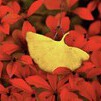
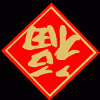



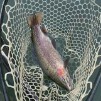
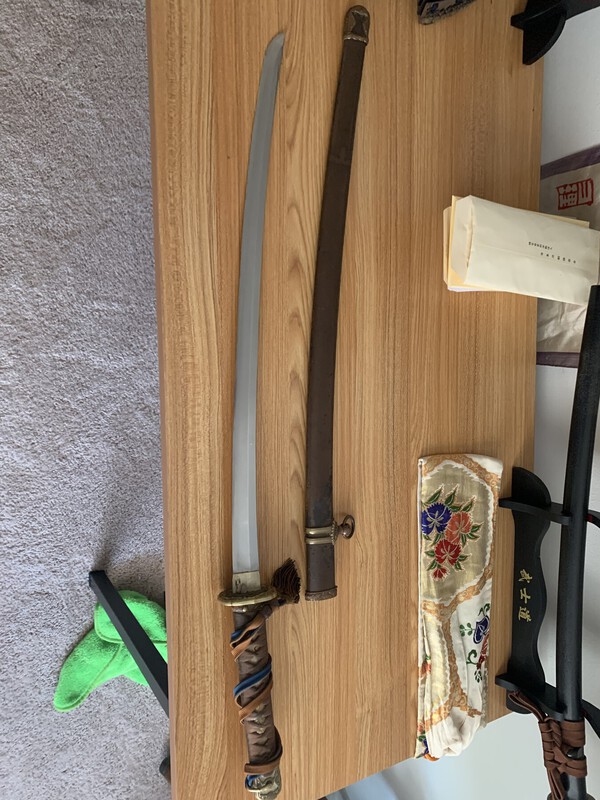

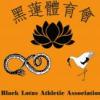
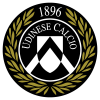
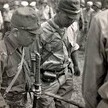
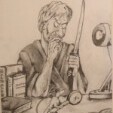

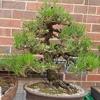



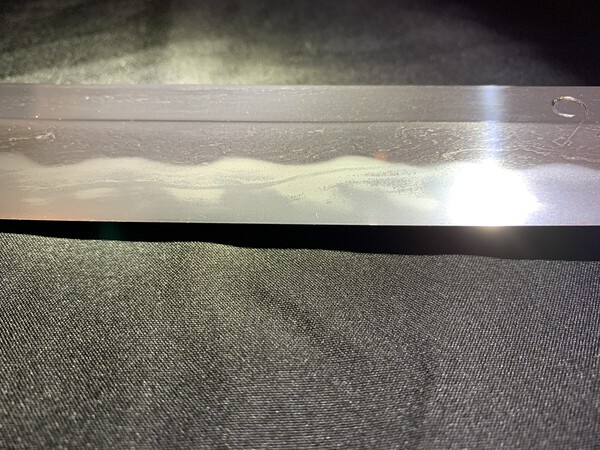
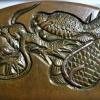

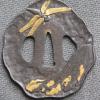


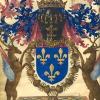

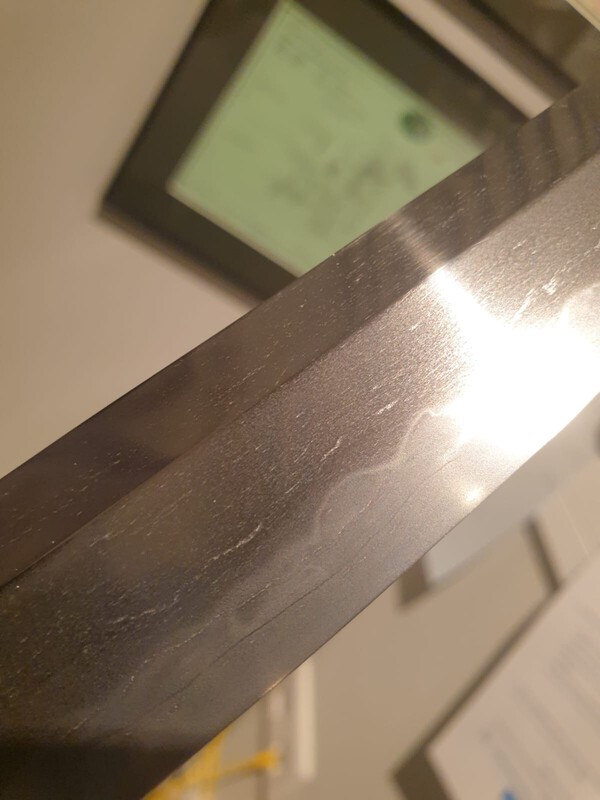
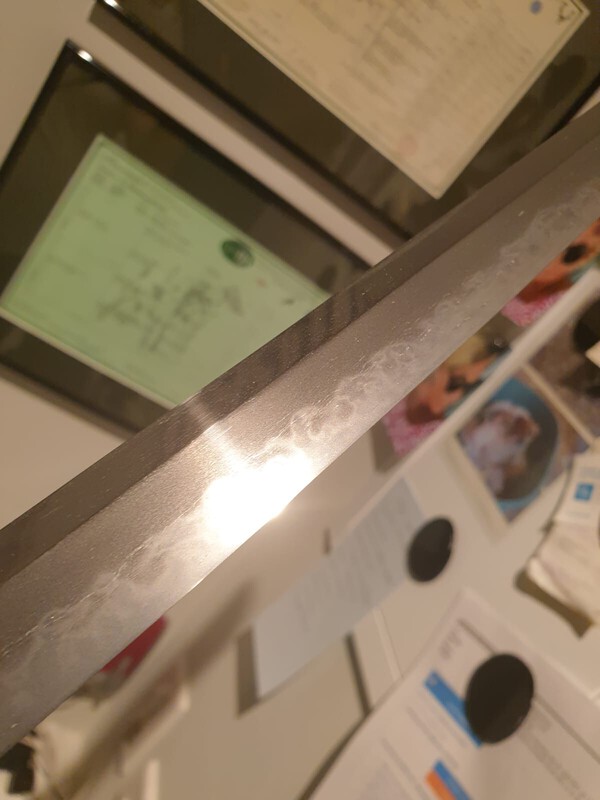
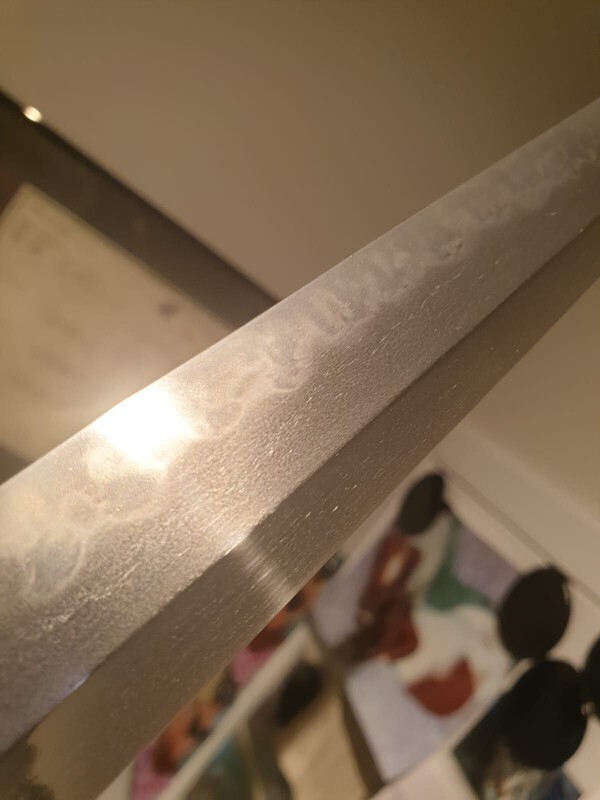

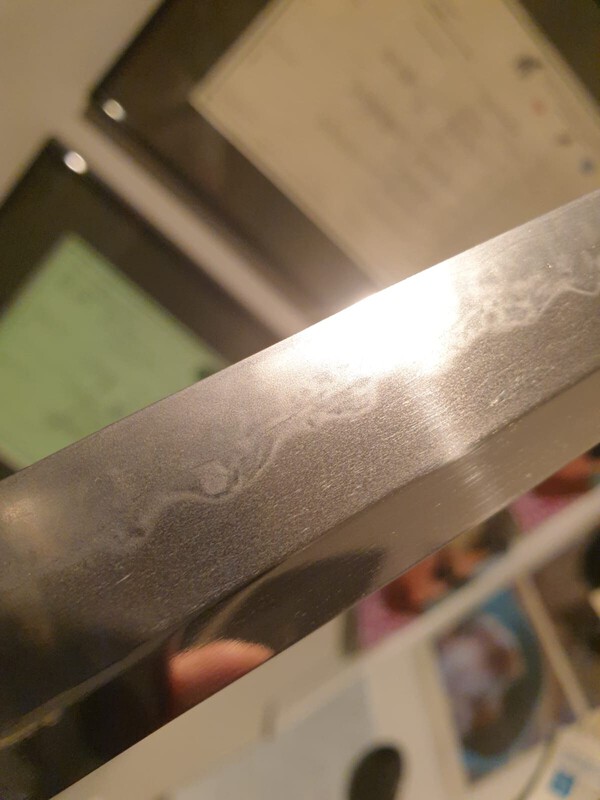
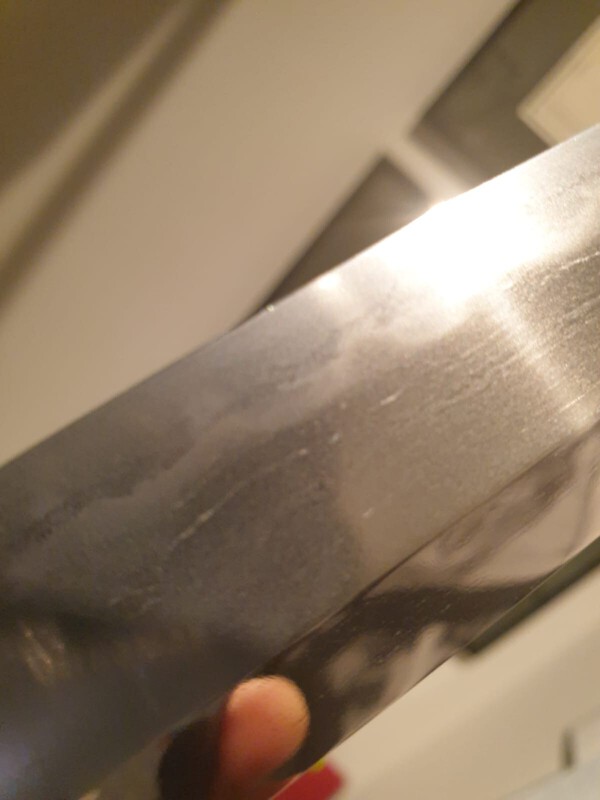
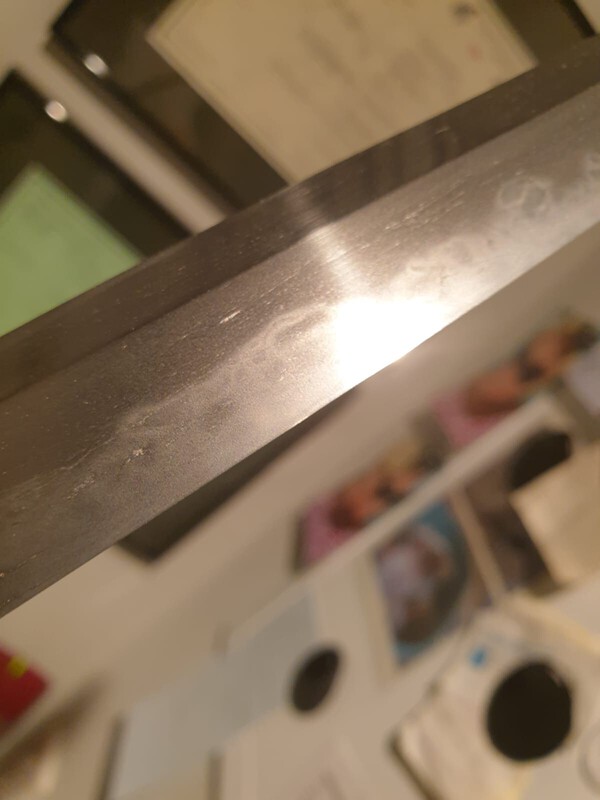
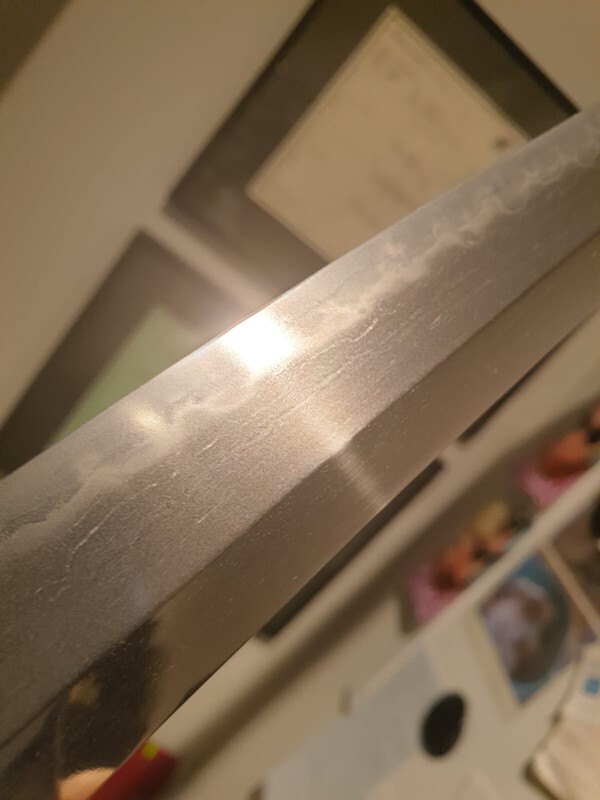

.thumb.jpg.ea461e8aed201835fd3267f04792003a.jpg)
.thumb.jpg.4d4d0ecb065f177054a2acafcd278c8a.jpg)
.thumb.jpg.5339f41c7a95ec95c9b54d976c6129c9.jpg)
.thumb.jpg.7f52275802409e0ac79aa9fd490ee4ee.jpg)
.thumb.jpg.e210892e5de58e21abbd04c86aae29c3.jpg)
.thumb.jpg.8b17f16956fba1c5d80fd1f1f4bc0e41.jpg)
.thumb.jpg.c445f0d56981ed1da7ac6493eb020105.jpg)


